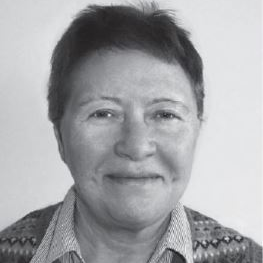State-of-Art in Autophagy and Neurodegeneration
A special issue of Cells (ISSN 2073-4409). This special issue belongs to the section "Autophagy".
Deadline for manuscript submissions: closed (25 July 2022) | Viewed by 10415
Special Issue Editors
Interests: autophagy and protein metabolism in cancer and in neurodegeneration; epigenetics in cancer; nutraceuticals and probiotics in cancer and infectious diseases
Special Issues, Collections and Topics in MDPI journals
Interests: neurodegeneration; brain; autophagy inductors; overweight: liver; lysosomes; cysteine proteases and their inhibitors; lysosomotropic drugs
Special Issue Information
Dear Colleagues,
Autophagy suppression was shown in several neurodegenerative diseases, like Alzheimer's, Parkinson's, and Huntington's diseases connected with the accumulation of amyloid-β, α-synuclein, and huntingtin, respectively.
Autophagy is also reduced in aging, which associates with physiological dementia, neuronal integrity loss and increased susceptibility to neurodegenerative disorders including Alzheimer's Disease, Parkinson Disease and Frontotemporal dementia, to name a few.
Thus, the autophagy activation through different pathways can reverse both neuronal dopaminergic and behavioral deficits in vivo and seems to be a promising therapy in pathology. Induction of autophagy as a means of improving the viability of cells and organisms is an attractive approach to experimental therapy of neurodegeneration.
This Special Issue of Cells will present research articles and reviews that cover the scope of autophagy and neurodegeneration. All scientists working in these fields are cordially invited to submit their manuscripts.
Prof. Dr. Ciro Isidoro
Prof. Dr. Tatyana A. Korolenko
Guest Editors
Manuscript Submission Information
Manuscripts should be submitted online at www.mdpi.com by registering and logging in to this website. Once you are registered, click here to go to the submission form. Manuscripts can be submitted until the deadline. All submissions that pass pre-check are peer-reviewed. Accepted papers will be published continuously in the journal (as soon as accepted) and will be listed together on the special issue website. Research articles, review articles as well as short communications are invited. For planned papers, a title and short abstract (about 100 words) can be sent to the Editorial Office for announcement on this website.
Submitted manuscripts should not have been published previously, nor be under consideration for publication elsewhere (except conference proceedings papers). All manuscripts are thoroughly refereed through a single-blind peer-review process. A guide for authors and other relevant information for submission of manuscripts is available on the Instructions for Authors page. Cells is an international peer-reviewed open access semimonthly journal published by MDPI.
Please visit the Instructions for Authors page before submitting a manuscript. The Article Processing Charge (APC) for publication in this open access journal is 2700 CHF (Swiss Francs). Submitted papers should be well formatted and use good English. Authors may use MDPI's English editing service prior to publication or during author revisions.
Keywords
- autophagy
- neurodegenerative diseases
- neurodegeneration Parkinson’s disease,
- Huntington’s disease
- Alzheimer’s disease
- mitophagy endosomal–lysosomal system
- therapeutic
- autophagy modulators







